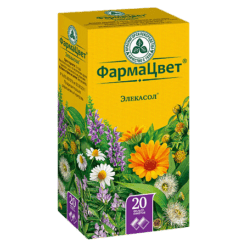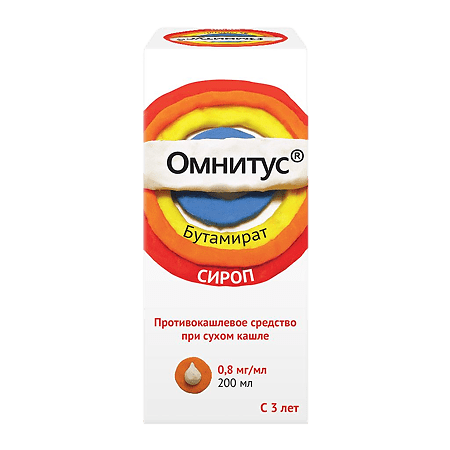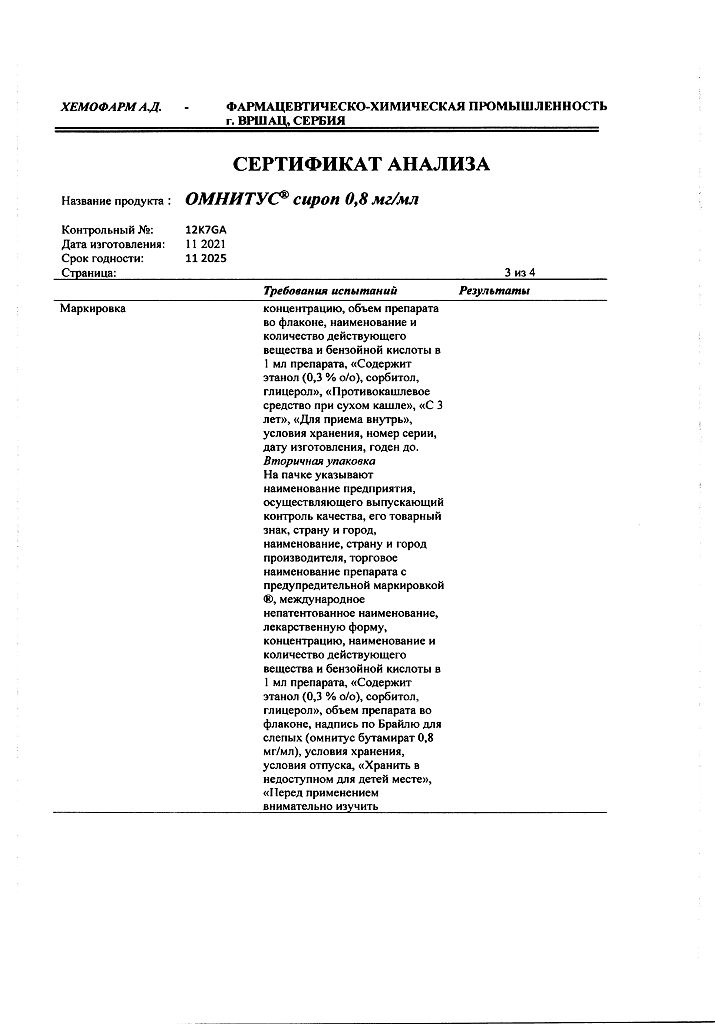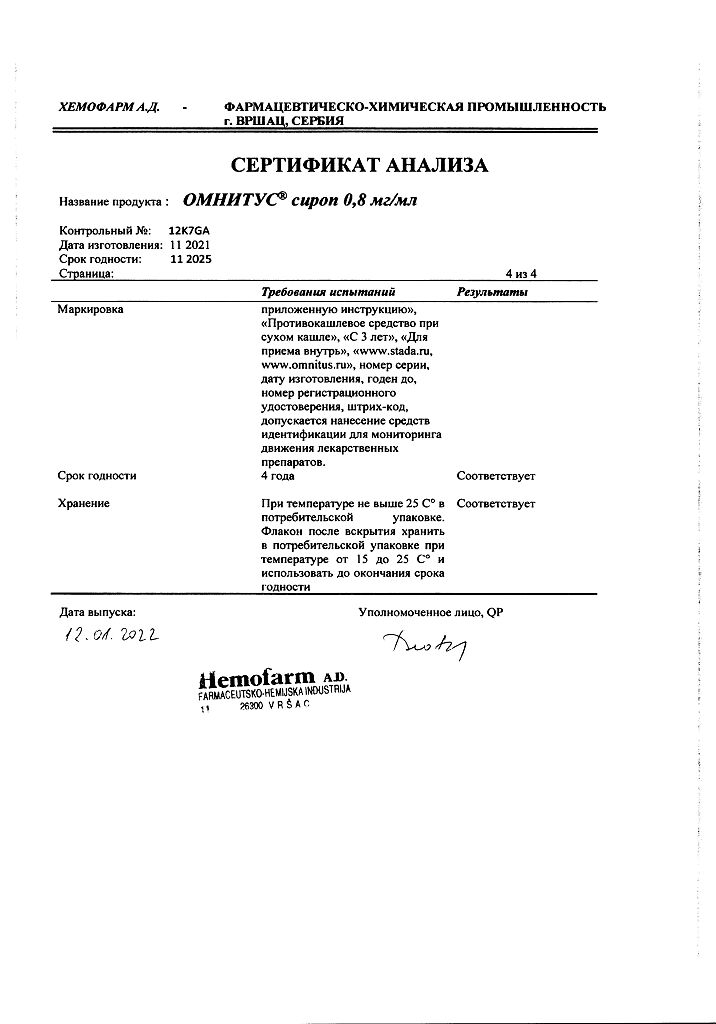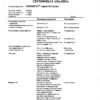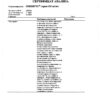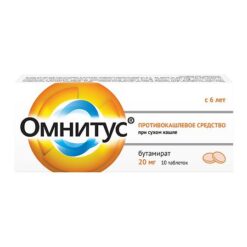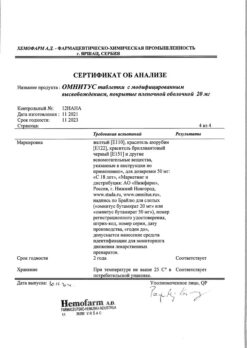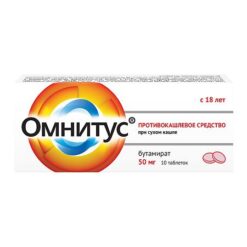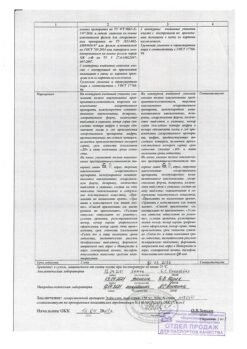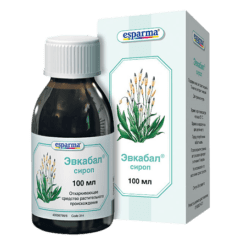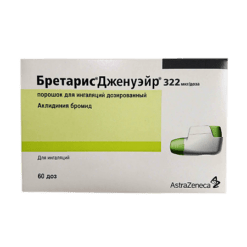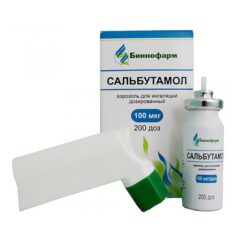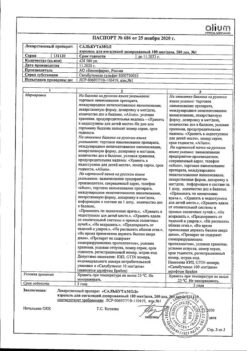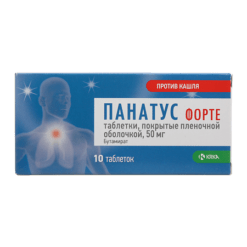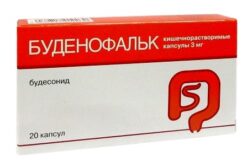Subtotal: €5.65
Omnitus, 0.8 mg/ml syrup 200 ml
€8.48 €7.07
Pharmacodynamics Butamirate, the active ingredient of Omnitus®, is an anti-cough agent of central action. It is neither chemically nor pharmacologically related to opium alkaloids. It is not addictive or addictive. Suppresses cough by having a direct effect on the coughing center. It has a bronchodilator effect (dilates the bronchi). Helps ease breathing, improving spirometry (reduces airway resistance) and blood oxygenation (saturates blood with oxygen). Pharmacokinetics Absorption is high. After oral syrup administration with a dose containing 150 mg of butamirate citrate, maximum plasma concentration of the main metabolite (2-phenyl butyric acid) is reached after 1.5 hours and is 6.4 µg/ml. Hydrolysis of butamyrate, initially to 2-phenyl butyric acid and diethylaminoethoxyethanol, begins in plasma. These metabolites also have antitussive activity and, like butamirate, are largely (about 95%) bound to plasma proteins, which determines their long elimination half-life. 2-phenyl butyric acid is partially metabolized by hydroxylation at para-position. No cumulation is observed when taking the drug again. The elimination half-life is 6 hours. Excretion of the three metabolites occurs mainly through the kidneys; after conjugation in the liver, the acidic metabolites are largely bound to glucuronic acid.
Indications
Dry cough of any etiology (for colds, flu, whooping cough and other conditions).
Pharmacological effect
Pharmacodynamics
Butamirate, the active ingredient of Omnitus®, is a centrally acting antitussive agent. It does not belong to opium alkaloids either chemically or pharmacologically. Does not form dependence or addiction.
Suppresses cough, having a direct effect on the cough center. Has a bronchodilator effect (expands the bronchi). Helps make breathing easier by improving spirometry (reduces airway resistance) and blood oxygenation (saturates the blood with oxygen).
Pharmacokinetics
Absorption is high. After oral administration of syrup in a dose containing 150 mg of butamirate citrate, the maximum plasma concentration of the main metabolite (2-phenylbutyric acid) is reached after 1.5 hours and is 6.4 μg/ml.
Hydrolysis of butamirate, initially to 2-phenylbutyric acid and diethylaminoethoxyethanol, begins in the blood plasma. These metabolites also have antitussive activity and, like butamirate, are highly (about 95%) bound to plasma proteins, which results in their long half-life.
2-phenylbutyric acid is partially metabolized by hydroxylation in the para position. When taking the drug again, no accumulation is observed.
The half-life is 6 hours. The three metabolites are excreted mainly through the kidneys; after conjugation in the liver, acidic metabolites are largely associated with glucuronic acid.
Special instructions
The syrup contains sorbitol and saccharin as sweeteners, so the drug can be used by patients with diabetes.
Active ingredient
Butamirat
Composition
1 ml of syrup contains:
Active substance
Butamirate citrate 0.8 mg;
Excipients
Sorbitol 70% (non-crystallizing) – 405.00 mg,
Glycerol – 290.00 mg,
Sodium saccharin – 0.60 mg,
Benzoic acid – 1.15 mg,
Vanillin – 0.60 mg,
Anise oil – 0.15 mg,
Ethanol 96% – 3.00 µl,
Sodium hydroxide – 0.10 mg,
Purified water – up to 1.00 ml.
Pregnancy
Contraindicated during lactation, the first trimester of pregnancy, children and adolescents under 3 years of age.
Contraindications
Hypersensitivity to the components of the drug, pregnancy (first trimester), breastfeeding period, children under 3 years of age. Fructose intolerance (the drug contains sorbitol).
Side Effects
Classification of the frequency of adverse reactions: very often (≥1/10), often (≥1/100, <1/10), infrequently (≥1/1000, <1/100), rarely (≥1/10000, <1/1000), very rarely (<1/10000), including isolated cases. From the central nervous system: rarely - dizziness, drowsiness. From the digestive system: rarely - nausea, diarrhea. Allergic reactions: rarely - skin rash, itching, urticaria.
Overdose
Symptoms: nausea, vomiting, drowsiness, diarrhea, dizziness, decreased blood pressure.
Treatment: orally – activated carbon, saline laxatives, if necessary – symptomatic therapy.
Complete set of goods
Syrup 0.8 mg/ml. 200 ml of the drug in a dark glass bottle of hydrolytic group III, sealed with a polyethylene cap with first opening control. On the top side of the cap there is a diagram for opening the bottle. 1 bottle together with a polypropylene measuring spoon (volume 5 ml, with a line for a volume of 2.5 ml) and instructions for medical use of the drug in a cardboard pack.
Storage conditions
At a temperature not exceeding 25 °C in consumer packaging. After opening, store the bottle in consumer packaging at a temperature of 15 to 25 ° C and use until the expiration date. Keep out of the reach of children.
Shelf life
5 years. Do not use after the expiration date stated on the package.
Manufacturer
Hemofarm A.D., Serbia
| Shelf life | 5 years. Do not use after the expiration date stated on the package. |
|---|---|
| Conditions of storage | At the temperature not more than 25 °С in the consumer package. After opening the bottle, store it in the consumer package at 15 to 25 °С and use it until expiration date. Keep out of reach of children. |
| Manufacturer | Chemopharm A.D., Serbia |
| Medication form | syrup |
| Brand | Chemopharm A.D. |
Other forms…
Related products
Buy Omnitus, 0.8 mg/ml syrup 200 ml with delivery to USA, UK, Europe and over 120 other countries.

